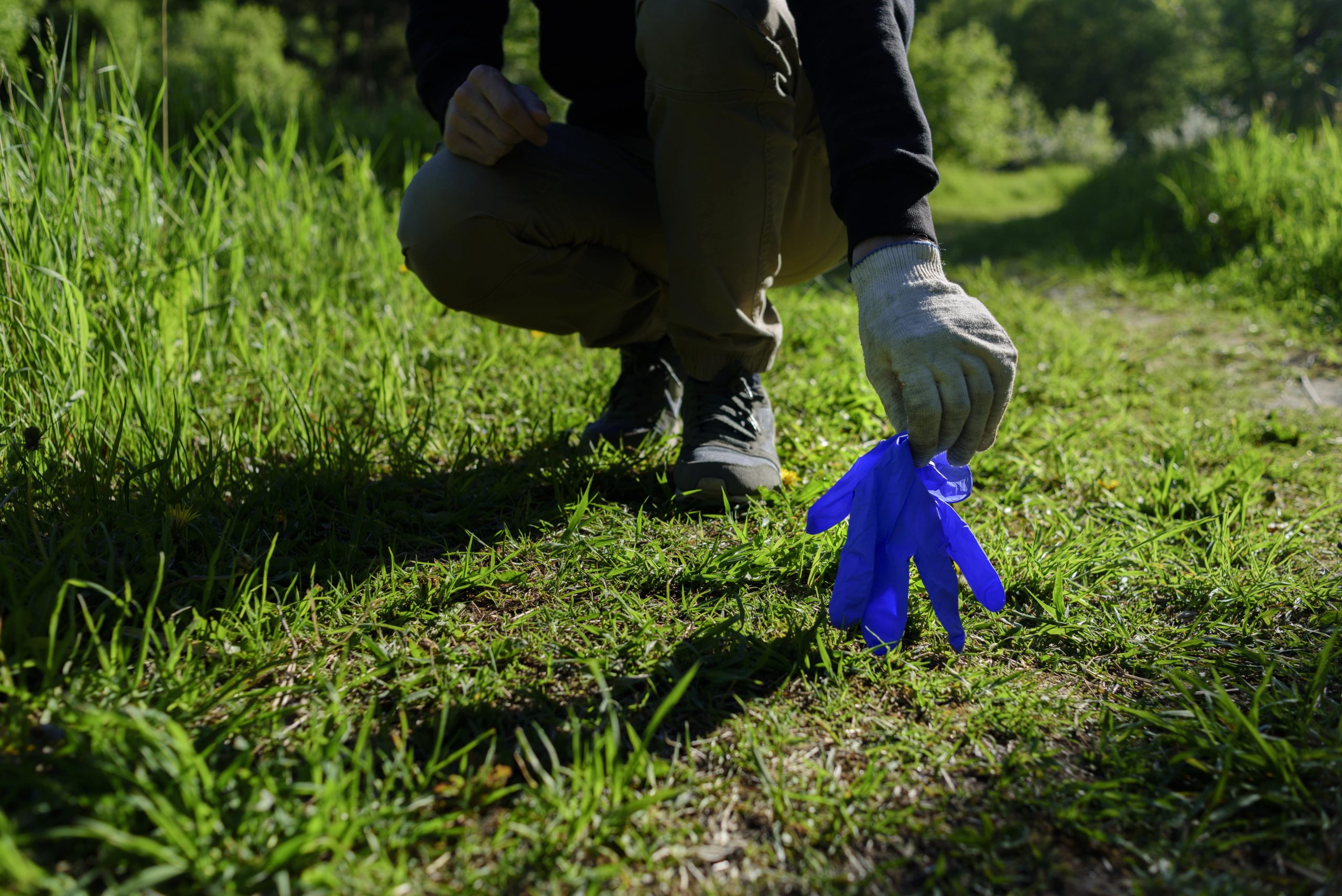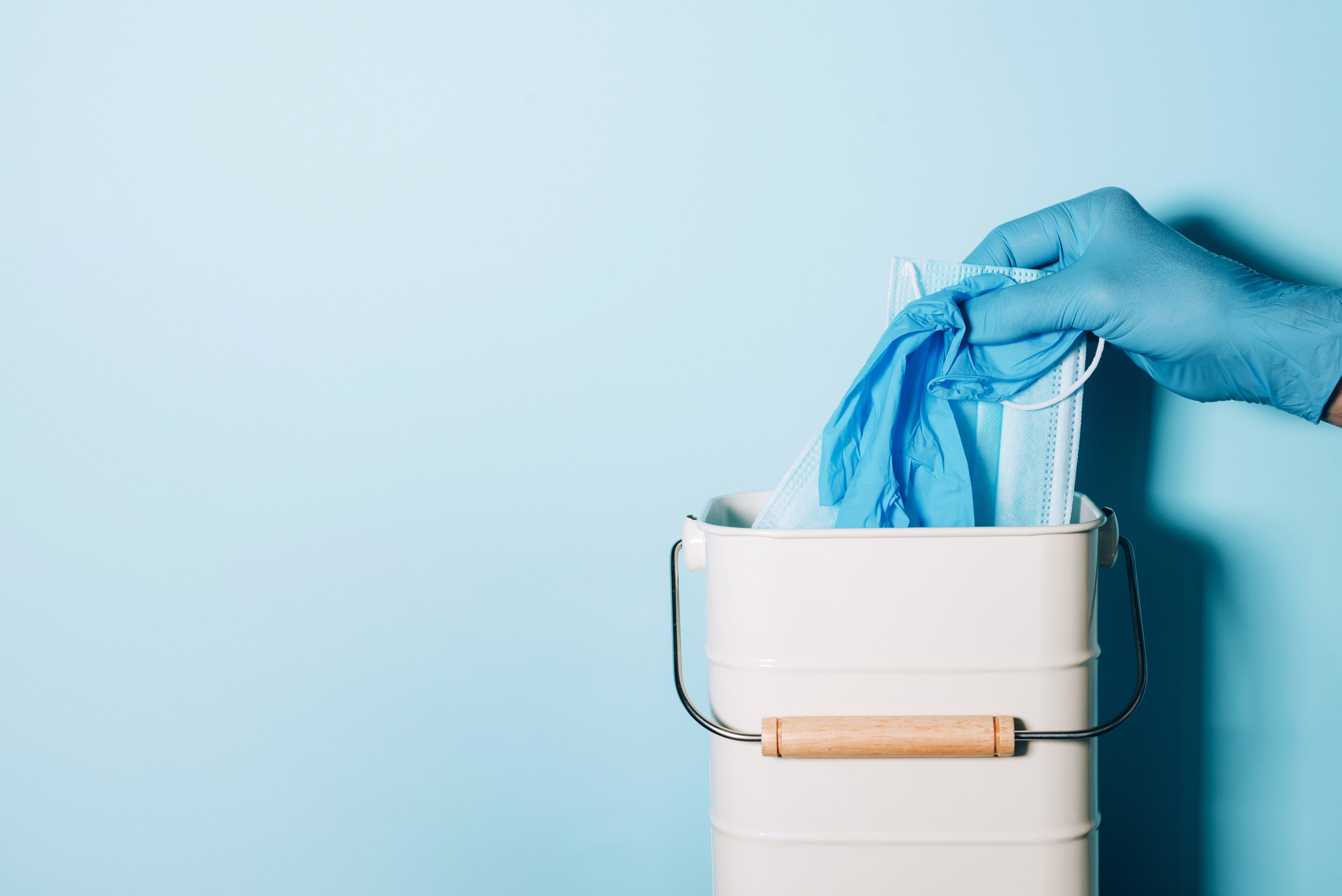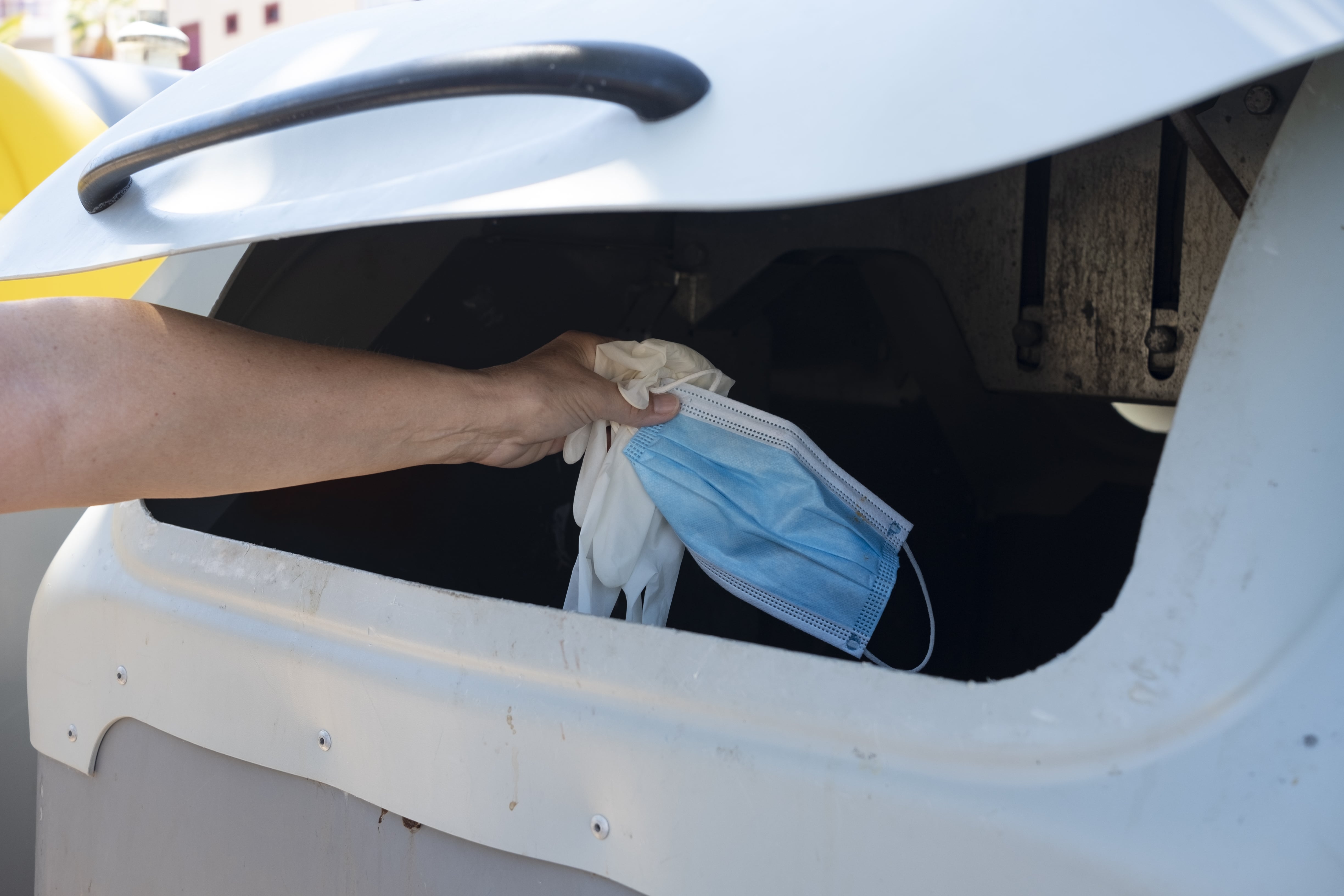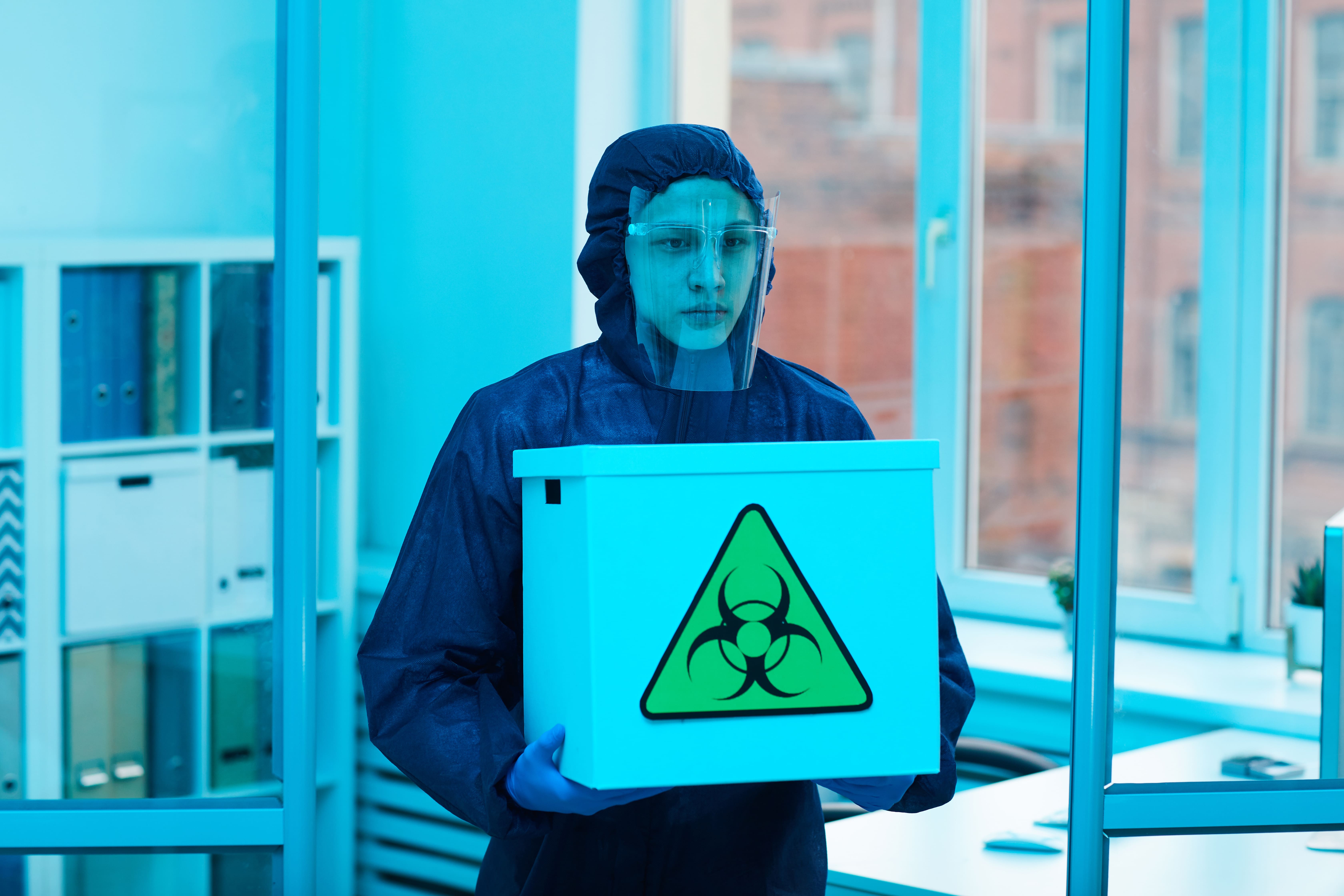Waste & material traceability solution for sustainable facilities

Medical waste management is critical for the safety of our healthcare professionals, employees, and patients. In a broader sense, it is vital for our communities and the environment’s health and safety. The correct handling, storage, transport, processing, and disposal of medical waste are all part of good waste management. Negligence in this area might have disastrous effects.
Over 16 billion syringes are launched every year, but these are not disposed of properly after use, shows a report by World Health Organization.
First, let’s talk about what biomedical or simply medical waste is.
There are different types of waste, biomedical, chemical waste and even electronic waste. If you want to read more about how you can deal with electronic waste, you can check out our blog on the same topic here.
Coming back to medical waste: Any waste created during the diagnosis, treatment, or vaccination of humans or animals, or in related research activities, or the manufacture or testing of biologicals, is referred to as medical waste.
Any trash containing infectious (or possibly infectious) elements is classified as biomedical waste. It should also include waste associated with the generation of biomedical waste that appears to be of medical or laboratory origin (e.g., packaging, unused bandages, infusion kits, etc.), as well as work waste containing biomolecules or organisms that are primarily restricted from release into the environment. The main classifications for healthcare waste are Sharps waste, pathological waste, other infectious wastes, pharmaceutical waste, cytotoxic waste, hazardous chemical waste, radioactive waste, and general (non-risk) trash. Now, 85% of this trash is non-hazardous, while 15% is toxic.
The waste management software apps are widely used for treating medical waste across different industries.
– Carcinogenic, mutagenic, or teratogenic cytotoxic medicines and other hazardous toxic waste.
– Any trash containing potentially radioactive elements is classified as radioactive waste.
– Liquid waste from machinery, batteries, and disinfectants is known as chemical waste.
– Unused and expired drugs and medications, such as lotions, tablets, and antibiotics, are pharmaceutical waste.
– Infectious Waste – Any infectious or polluted waste.
– Human or animal tissue, body parts, blood, and bodily fluids are considered pathological waste.
– Needles, scalpels, shattered glass, and razors are examples of sharps.

Biomedical waste is generated by human and medical practices, including illness diagnosis, prevention, and treatment. Schools, medical clinics, nursing homes, emergency medical services, labs for scientific testing, physicians’ offices, dentists’ offices, veterinarians’ offices, home health care, and morgues or funeral homes are all traditional sources (or manufacturers) of biological waste. Medical or surgical waste is trash that has these characteristics and is generated at healthcare institutions (e.g., hospitals, laboratories, physicians’ offices, veterinarian schools, and clinical research labs).
In general, healthcare institutions generate between 75 and 90 per cent non-risk (non-infectious, non-hazardous) general trash, which is equivalent to household garbage. However, the infectious waste contains pathogens (disease-causing bacteria, viruses, parasites, or fungus) in sufficient concentrations or quantities to induce disease in susceptible hosts.
According to an analysis of waste generation rate statistics worldwide, hospitals create around 0.5 kg per bed each day. However, this amount and the trash’s underlying composition varies greatly depending on the local environment, with higher-income nations producing considerably more waste, with plastic, for example, accounting for more than half of all medical waste. Because of this wide range of possibilities, there is no one-size-fits-all approach for dealing with medical waste. E-waste can be a big cause of concern for the future, according to Evreka.
Because of the risk of being contaminated with blood and their propensity to cause damage if not adequately controlled and disposed of, discarded sharps are considered biological waste, whether or not they are infected. Waste management in healthcare institutions is a procedure that should not be done lightly. This method is critical for the staff’s, population’s, and environment’s safety.
Any inconsistency in the procedure might violate state or federal regulations, impair the healthcare facility’s reputation, or harm the environment. In addition, medical waste that is improperly handled can put healthcare workers, professionals, and other support staff at risk. As a result, waste management requires equal amounts of compliance, training, and education.
According to WHO and other health organizations’ recommendations, hazardous medical waste should be handled as near to the manufacturing site as feasible (operating theatres, laboratories, etc.). This necessitates accountability for all hospital personnel participating in the process so that trash is separated at the source.

Collection
Biomedical trash is collected using various types of containers from diverse biomedical waste sources, such as the operating room, laboratory, wards, kitchen, and corridor. The containers/bins should be arranged so that they gather 100% of the trash. Sharps must always be maintained in puncture-proof containers to protect employees from injury and illness. Trolleys or covered wheelbarrows should be used to convey the waste for treatment. Manual should not be done.
Segregation
The first step in adhering to hazardous waste disposal regulations is trash segregation (although not all medical waste is deemed hazardous). There are rules for medical waste management that explicitly describe how each kind of trash should be collected and disposed of; for example, sharps disposal differs significantly from chemotherapeutic waste disposal. Clarity is essential, especially regarding regulatory bodies’ standards for storing, transporting, and disposing of non-hazardous and hazardous medical waste.
Transportation
After it is segregated, it needs to be transported appropriately. Trolleys or covered wheelbarrows should be used to transfer the trash for treatment. As far as possible, manual loading should be avoided. Before transporting BMWs, the bags/containers carrying them should be tied/lidded. Before transferring the BMW bag, it must be accompanied by signed paperwork from a nurse or doctor that includes the date, shift, quantity, and destination.
Special vehicles must be utilized to protect transportation operators, scavengers, and the general public from direct access to and contact the trash.
The shipment containers must be well-protected. The driver should be taught the procedures to follow in the event of an accidental spillage, and the impacts of traffic accidents should be addressed in the design. It should also be able to clean the containers’ inside properly.
Clinical trash is dumped after it has been disinfected to ensure its safety. Waste that cannot be reused, such as fabric or needles, should be sterilized and non-hazardous before being disposed of. Typically, an autoclave is used for this operation. A clinical autoclave is a device that uses steam to fix hardware and other items. This means that all tiny creatures, diseases, parasites, and spores are inactivated by applying extremely high temperatures to the point that no microbes can survive, and the items are safe to reuse or dispose of.

There are many effective solutions for treating medical waste before it is disposed of. Here are a few of them,
Incineration
Clinical waste is heat processed in two ways: by burning it at an off-site disposal facility or utilizing an autoclave or microwave treatment system. First, clinical waste is burned, destroying 99 percent of germs and a few lingering remnants. Then, incineration takes place in a controlled office designed to provide total ignition with little environmental impact. The medical waste should be pre-heated before it is burnt and finally disposed of.
Microwaving
Microwave treatment, like mentioned above, uses high temperatures to penetrate and disinfect clinical waste. Microwave therapy works similarly to a regular microwave in that it generates heat by heating water particles within a material. However, because microwaves rely on water to clean, materials destined for microwave treatment must be destroyed in specific states and then mixed with water before being processed.
Steam
Steam sterilization is a more cost-effective alternative medical waste treatment that is also popular in underdeveloped countries. Whether used alone or as part of a hybrid solar steam sterilizer, solar heating kills germs and disinfects waste using a solar cooker method.
Autoclaving
Sharps tools, such as needles, knives, syringes, and similar materials, are heated in autoclaves. Autoclaves may handle anything from 100 to 4000 litres of bulk trash. Autoclaves provide a high-temperature steam cleansing of medical waste for complete sterilization using steam. Sterilized items become non-hazardous and can be disposed of according to conventional procedures after being sterilized in an autoclave.
Disposal of Chemicals
Chemical disinfection can treat some forms of medical waste that do not react well to traditional treatment methods. Chemical disinfection is utilised chiefly for liquid-based waste like blood, urine, faeces, or hospital sewage. It generally entails shredding any materials and treatment as near to the collecting location as feasible.
Recycling
Before creating trash, it should be studied whether the amount of waste produced may be reduced to lower the amount of work required for later handling, treatment, and disposal activities. However, equipment reuse has practically vanished due to the marketing of single-use products and the necessity to avoid the transmission of nosocomial infections. This is especially true for medical supplies like syringe needles. However, there are alternative options for recycling or reuse, particularly for products or items that are not directly utilized in healthcare (paper, cardboard, glass, metal containers, plastic wrappings). The proper management of medicinal supplies in hospital pharmacies is one of the most effective waste reduction techniques.

If not correctly managed, medical waste can pose several health risks to healthcare professionals, trash workers, and the general public. For example, if needles are inadvertently transported to recycling facilities or containers burst open in transportation, we may be exposed to needle sticks and illness. In addition, sharps push their way out through plastic bags, putting housekeepers and janitors at risk.
Microorganisms, radiation burns, poisoning, pollution, and other hazards can all be found in hazardous waste. Finally, inadequately handled waste disposed of in landfills can pollute our drinking water and the ecosystem.
How can we prevent these hazards?
The majority of medical waste concerns may be avoided by following a few basic best practices. First, employees should be aware of the rules, then categorize and segregate all trash into the appropriate color-coded waste bins. Next, waste should be labelled according to its type during transit, and the proper documentation should accompany all containers. Some advanced MWM web-based solutions can be used for proper medical waste management. Some of these are:
The first step in properly disposing of garbage is identifying the type of waste you’re working with. To avoid overpaying with your garbage disposal, do not mix non-hazardous debris with the rest. Next, sort the garbage into categories. Sharps, pharmaceutical, chemical, pathological, and non-hazardous waste should all be segregated into various categories. For example, medical waste that is regulated is placed in red bags. Sharps must first be placed in puncture-proof containers before being placed in these bags.
Use the colour code for medical waste disposal. According to the colour coding scheme for waste segregation, all sharps should be placed in puncture-resistant red biohazard containers. Red bags and containers are used for biohazard trash. Trace chemo waste goes into yellow containers, whereas pharmaceutical trash goes into black containers for hazardous chemicals and blue containers for everything else. Radioactive trash is placed in shielded containers with a radioactive emblem on them. Employ the services of a reputable garbage removal business.
Healthcare workers face a tremendous challenge due to several regulatory agencies, varied risks, and diverse types of waste. Therefore, it is frequently necessary to work with a dependable vendor, like Us. We make sure that the impact of management does not affect patients, the hospital environment, or the surrounding environment. · Another advantage of choosing us is that we have a comprehensive understanding of their job and are always prepared to provide the most professional services based on this expertise. You can count on us since we use the safest and most reliable medical waste recycling and disposal techniques. We have the most up-to-date information or news about the industry, as well as the most up-to-date approaches, and so on. We also use the most sophisticated (technically) and mainly built machinery and equipment to carry out their task.
We rigorously follow the regulations established by regulatory organizations, so you won’t have to worry about legal difficulties if you employ us.
We accomplish this in terms of medical waste removal as well as liquid waste removal; We give services in accordance with the laws and regulations set forth. We hope this guide helped you understand the nuances of medical waste management. Click here to find out more information about our services.